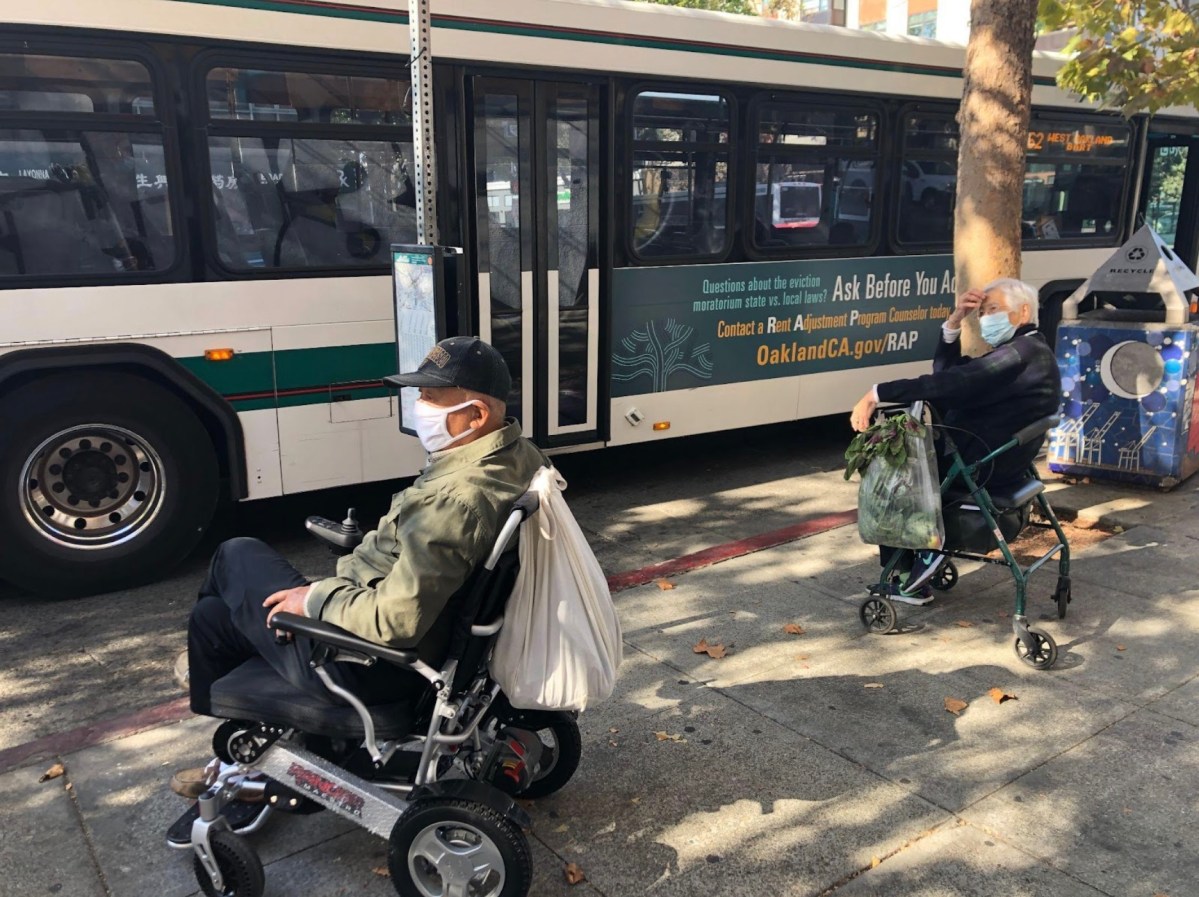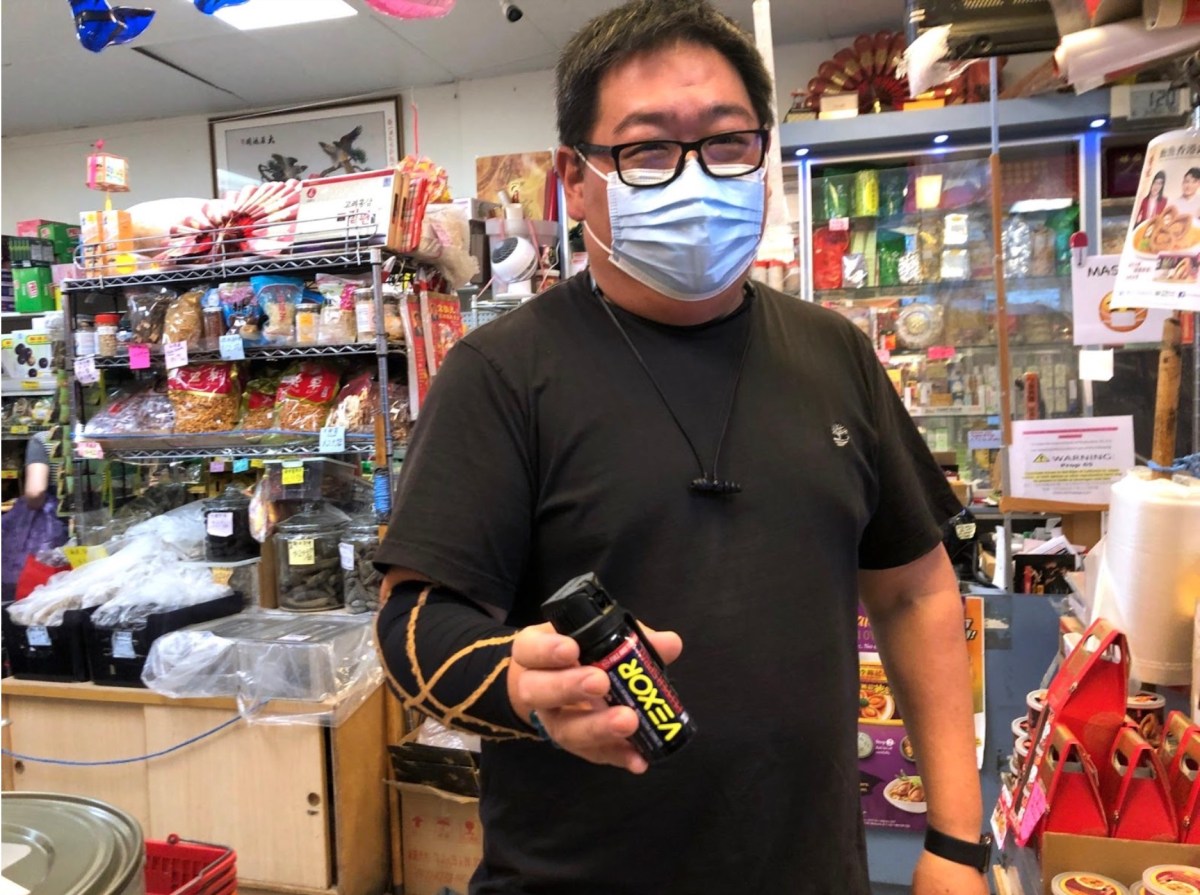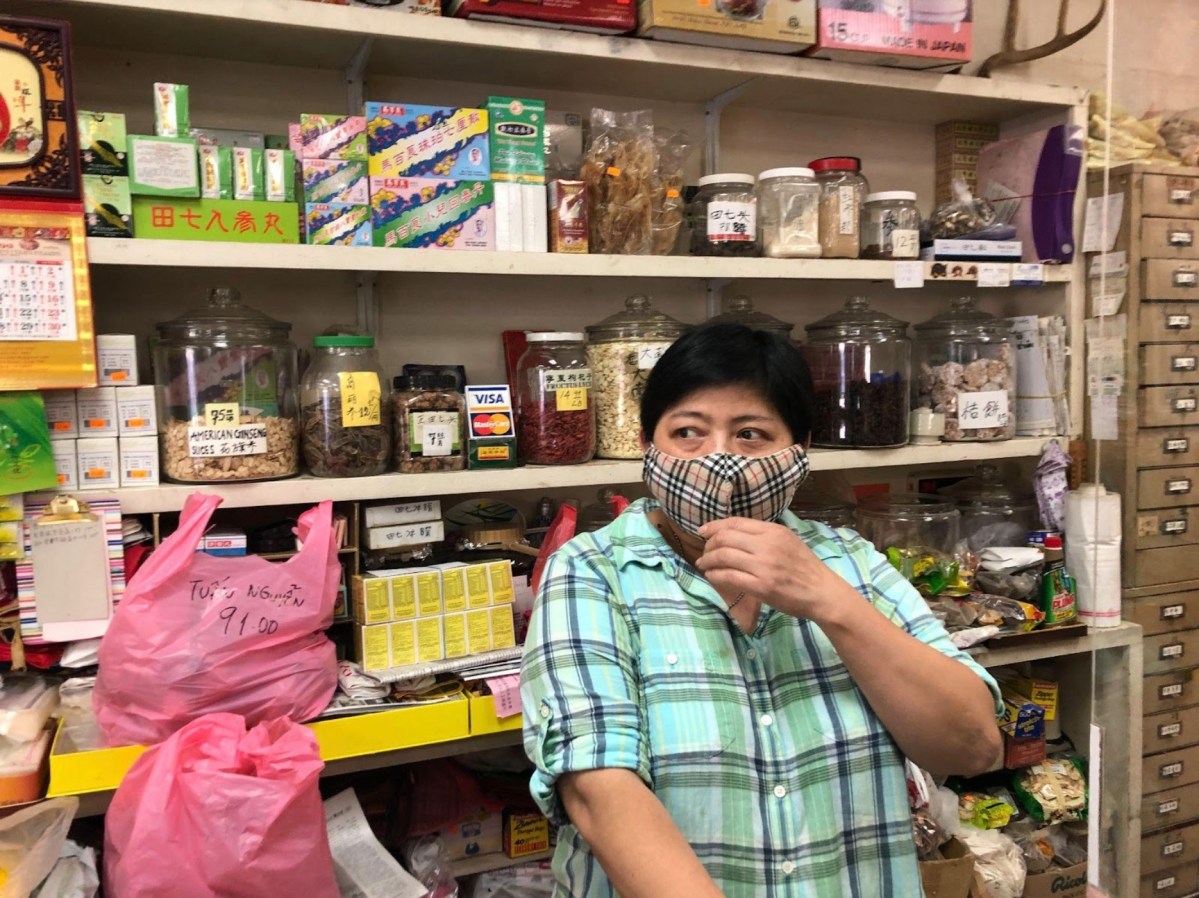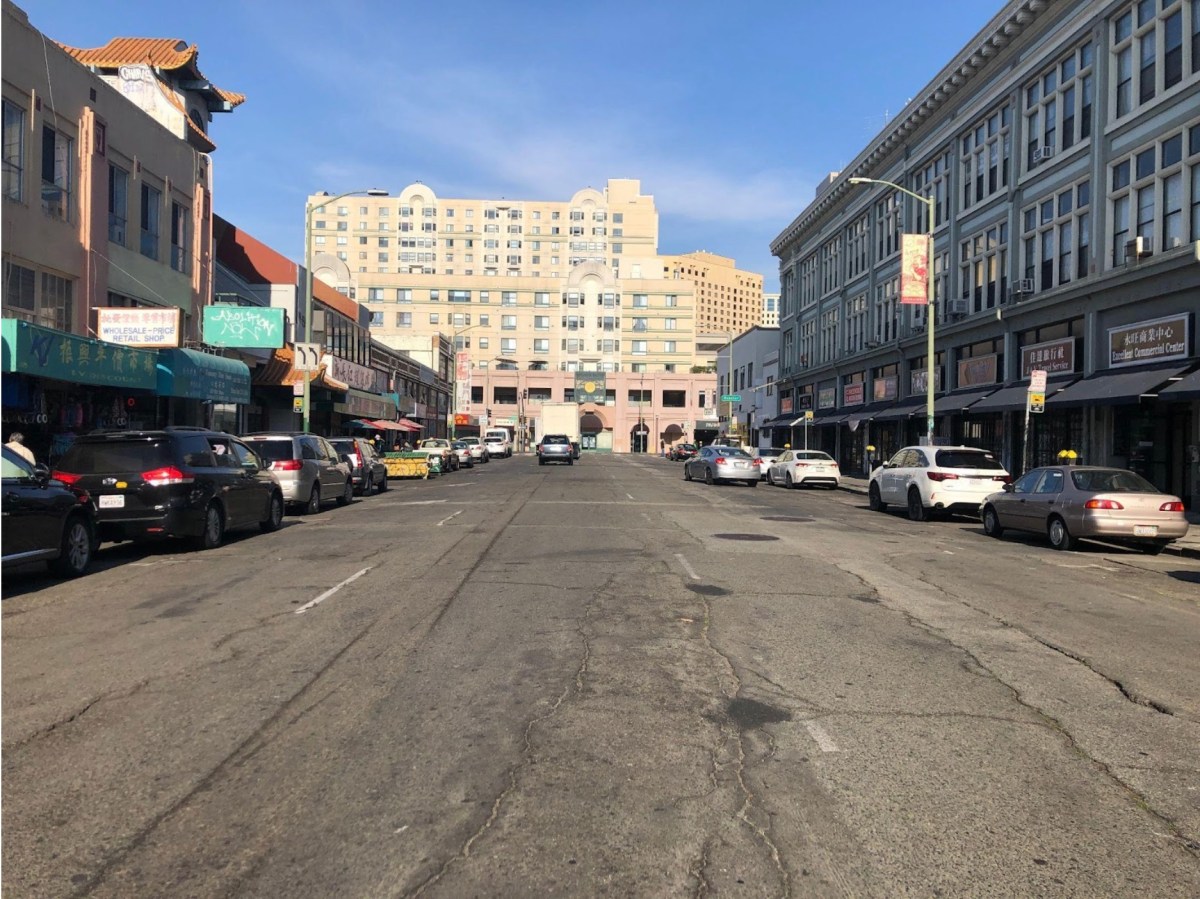From horses to highways, the streets of Oakland’s Chinatown have been shaped by traffic in a variety of forms since its founding in 1850. They could soon be reshaped again.
With a $500,000 Caltrans Sustainable Communities grant it was awarded in June, Oakland’s Department of Transportation will soon begin a multilingual community outreach program to collect input from people in Chinatown about their streets. The information will be used to help inform updates and design changes aimed at increasing pedestrian and bicycle safety and reducing carbon emissions from vehicle traffic. The public’s opinion will be solicited beginning in early 2022.
Central Chinatown is a 15-block grid of one-way streets. It includes two busy through-roads—Webster Street and Harrison Street—that connect Oakland to the city of Alameda, via the Webster Street and Posey tubes, respectively. Slower traffic cruises along the numbered perpendicular streets, usually looking for a place to park, unload shipments, and access local businesses. Add foot traffic and the area becomes a mix of vehicles and people moving through the same space at very different speeds.
As a result, pedestrian safety is a particular concern in Chinatown. There were 137 pedestrian collisions and 71 bicycle collisions between 2015 and 2019 there, according to the city in its grant application to Caltrans. A number of Oakland’s most dangerous roadways, identified by the city as “high injury” corridors, are also clustered in Chinatown.

Oakland Chinatown Chamber of Commerce President Carl Chan heard about the project only after the grant was awarded. “It’s nice that the DOT is starting to reach out. I think it would be nice to know,” he said. “It would be nice to plan with the people and then inform the people what is going to happen.”
Chan said collaborative efforts with city departments to improve road safety in Chinatown were disjointed in the past, and didn’t result in change. “Sometimes there was not a coordinating effort, so everyone was doing their own [work],” he said. “And then in the end, what we had was traffic studies.”
Some design changes along the neighborhood’s southern boundary are already planned. The Oakland Alameda Access Project, which is meant to remedy the spaghetti junction that currently sends cars winding through Chinatown as they go between the interstate and the tunnels, includes a new Alameda exit designed to draw traffic away from the neighborhood. And the Oakland 7th Street Connection project will create new pedestrian pathways from West Oakland that connect with Alameda and Chinatown.

Chinatown is already one of the most transit-dependent neighborhoods in Oakland. The city estimates that 38% of Chinatown’s 3,612 households do not have access to a vehicle, compared to a citywide average of 16%.
Over 40% of Chinatown residents are over 60, which brings another set of challenges.
“They cannot walk for more than like three or four blocks,” said Charlie Quach, who sees a lot of seniors in his practice at Hoan Cau Company, an herbal medicine shop on Ninth Street. “You know they are fragile,” he said, “their bodies, their knees, their bones.”
Quach would like to see longer time intervals at pedestrian crosswalks and traffic slowed in certain areas such as school zones. “It’s not about what’s convenient for some people,” he said. “Politics should work for all.”

Just up the street from Quach, Wayne Chang of M&A Cash and Carry likes the one-way streets. “Simple is better for us, it’s more relaxed,” he said. “If it’s too complicated, it makes people nervous and more hesitant to come out.” Chang also prefers wide roads, where people can double park to run in and out of a store.
Next door to Chang at Thuoc Bac Hong Kong market, owner Heiman Shao said she just wants a street design that ensures parking for her staff and customers.

Traffic isn’t the only issue the neighborhood is facing, Chan noted. Chinatown businesses have suffered during the pandemic, and attacks against Asians have frightened people away.
“We don’t want to lose Chinatown entirely or a major portion of Chinatown because people cannot survive,” Chan said. “People are starting to avoid coming to Chinatown and that will be something that we need to really worry about.”
Zhe Wu and Jiyun Tsai contributed to this story.
This article was produced and published in collaboration with Oakland North.

